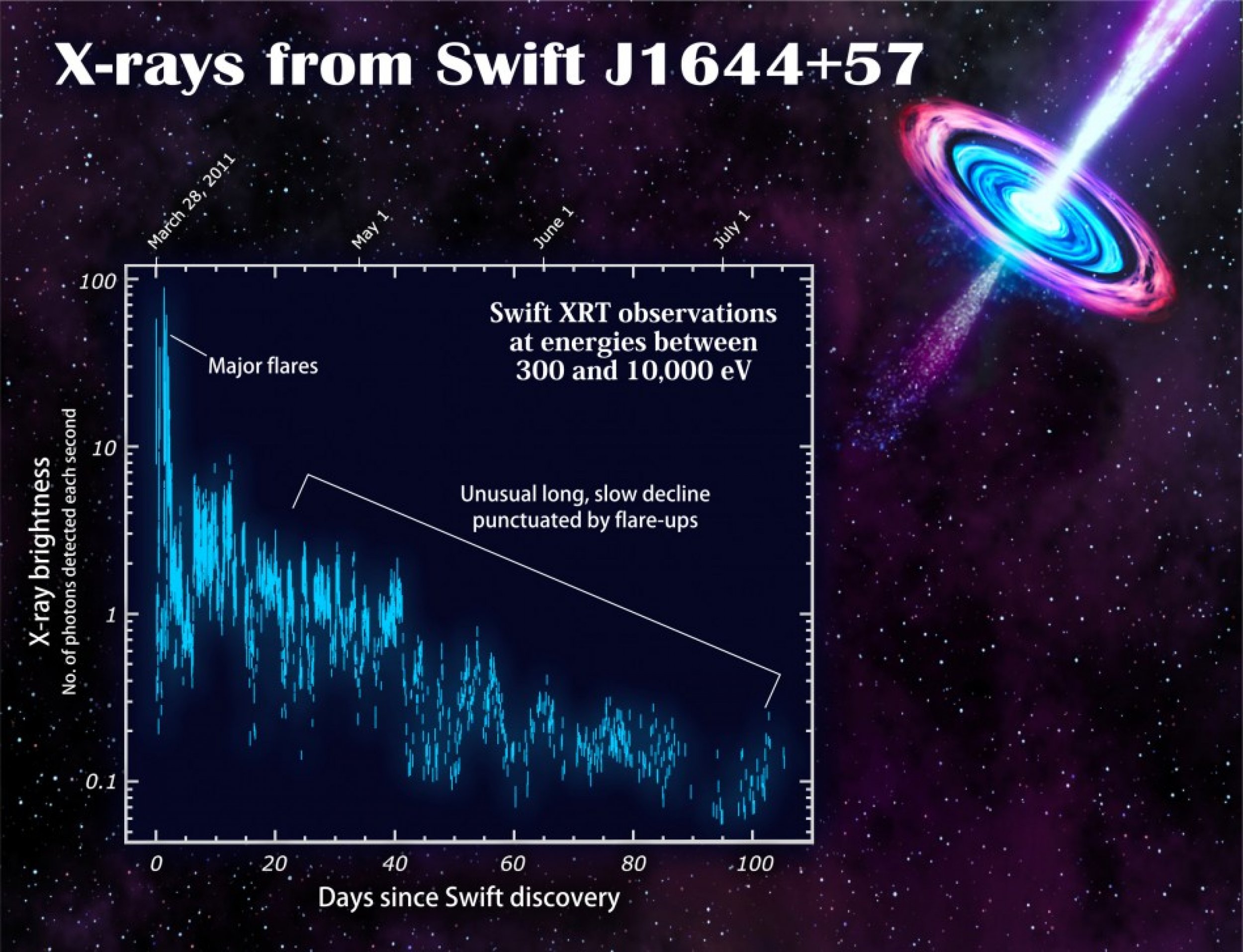Giant Black Hole Caught Swallowing a Star for the First Time [VIDEO & PHOTO]
Astronomers caught a giant black hole swallowing a star for the first time.
NASA released an animation of the rare event on Wednesday showing how the black hole shredded and consumed the star.
Scientists were familiar with the aftermath of a black hole eating a star, but have never seen the destruction from the onset until NASA's Swift satellite detected high-energy flares coming from a new source back in March.
It turned out to be Swift J1644+57, a previously dormant black hole in the Draco constellation, almost 4 billion light years away.
NASA believes this black hole may be twice the size of the black hole that exists in our galaxy.
Large black holes are at the centers of virtually all large galaxies and can be millions to billions of times the mass of the sun. Black holes can tear apart any passers-by. Evidence of a black hole destruction may come be seen as a bright flare of ultraviolet, gamma and X-rays, which can supposedly last for years as the star is slowly eaten.
It was nothing like we expected for a gamma-ray burst, said Ashley Zauderer, an astronomer at the Harvard-Smithsonian Center for Astrophysics who helped co-author one of two studies on the event.
This is what scientists believed happened.
The theory they are working with is that the unlucky star must have strayed too close to the supermassive black hole, which is approximately twice the mass of the four-million-solar-mass supermassive black hole residing in the center of the Milky Way.
Discovery News said the tidal shear close to the black hole's event horizon is so powerful, the star's structure would have warped dramatically. Very quickly, the stellar plasma will have streamed around the spinning black hole, forming a superheated disk of plasma. The plasma closest to the black hole then got pulled into the event horizon, accelerating as it did so, according to Discovery News.
The discovery article stated that the rapid acceleration and complex magnetic fields nearest to the black hole then funneled the matter into the event horizon. However, some of the matter escaped as jets, blasting into space at relativistic speeds (exceeding 90 percent the speed of light) from the black hole's spin axis.
One of those jets was pointed directly at the Swift satellite that caught the powerful X-rays created right at the base of the jet. Powerful radio waves were also detected as the relativistic jet slammed into the interstellar medium surrounding the black hole.
Check out the magnificent animation of the sight below.





© Copyright IBTimes 2025. All rights reserved.






















